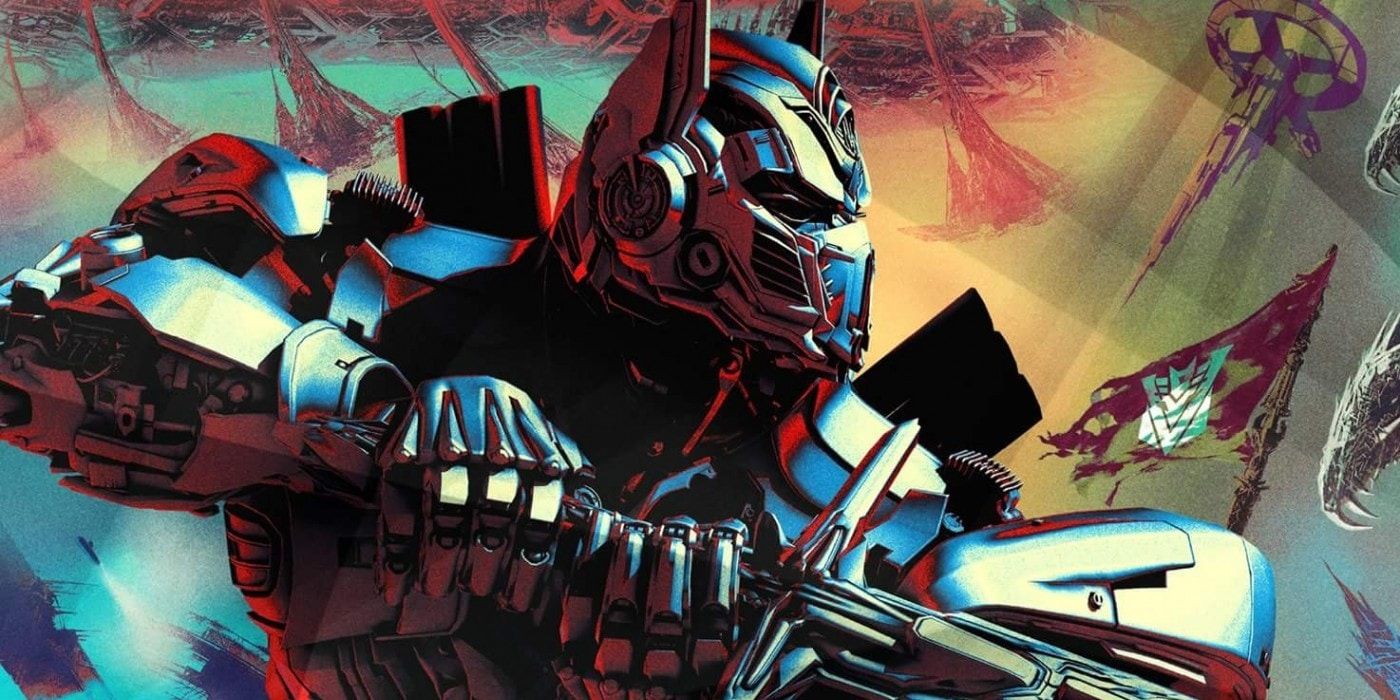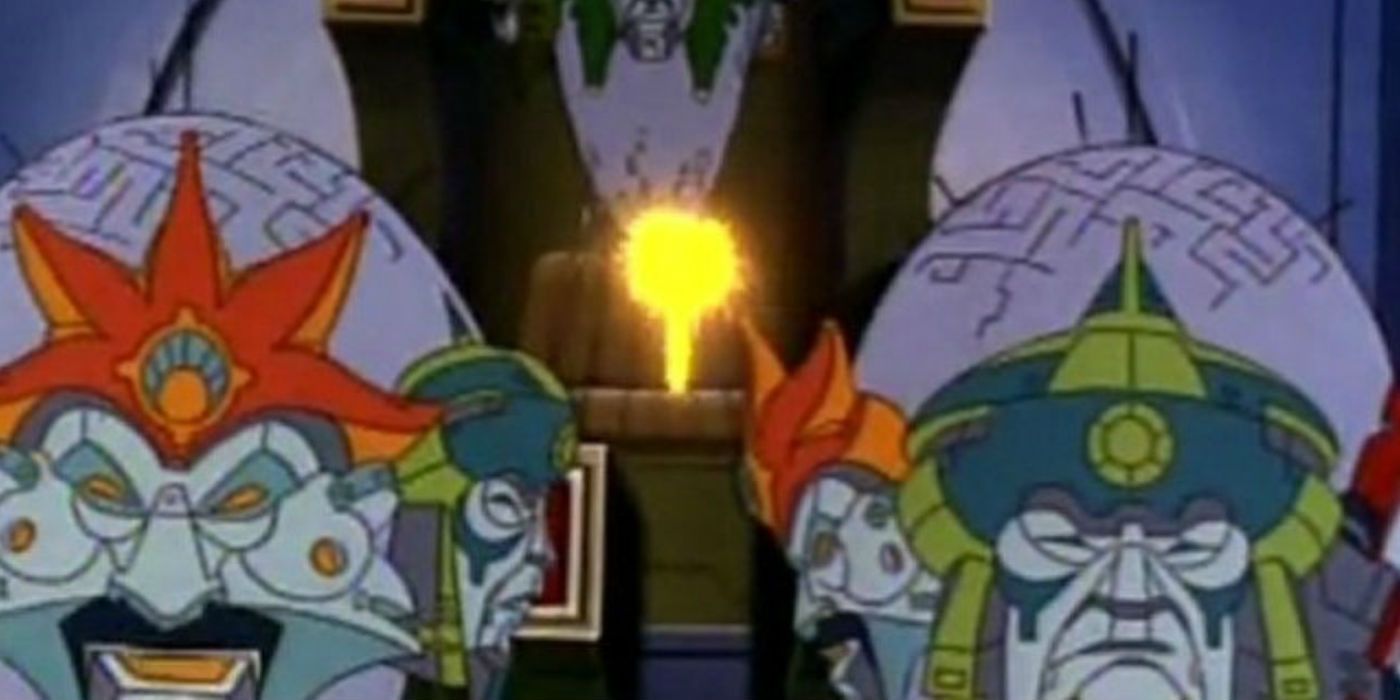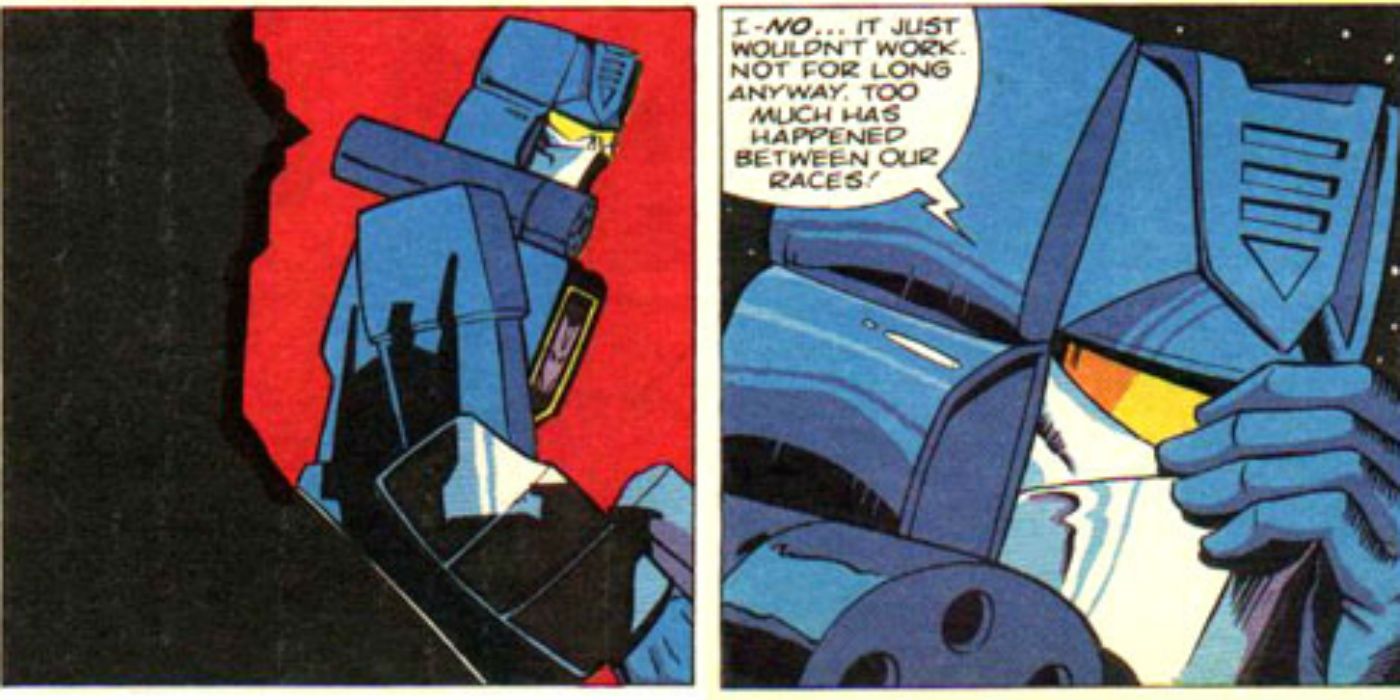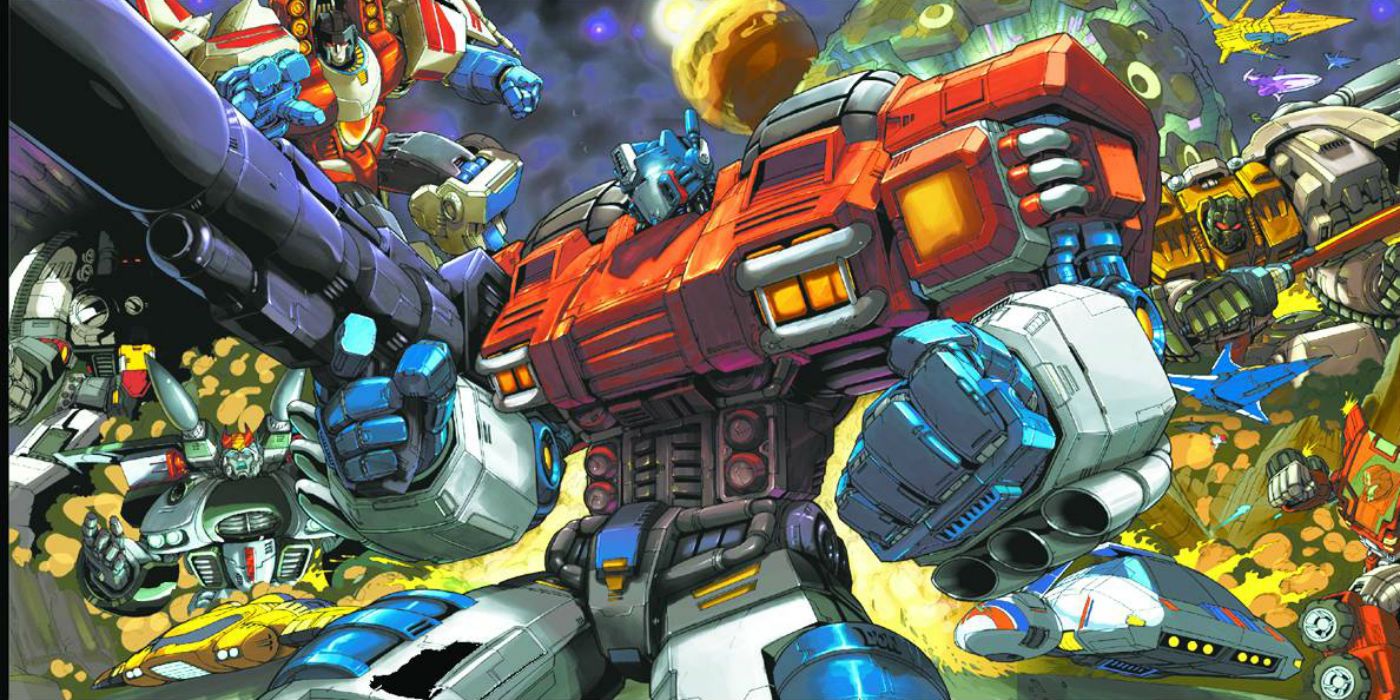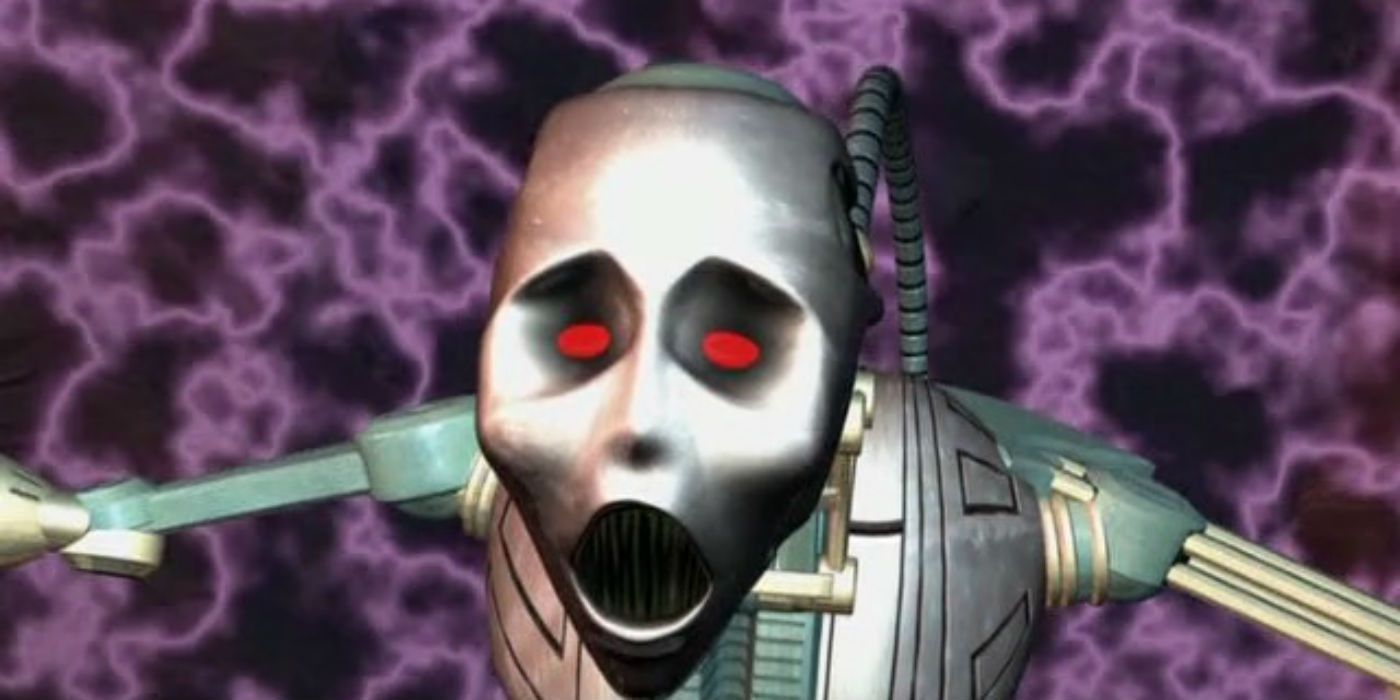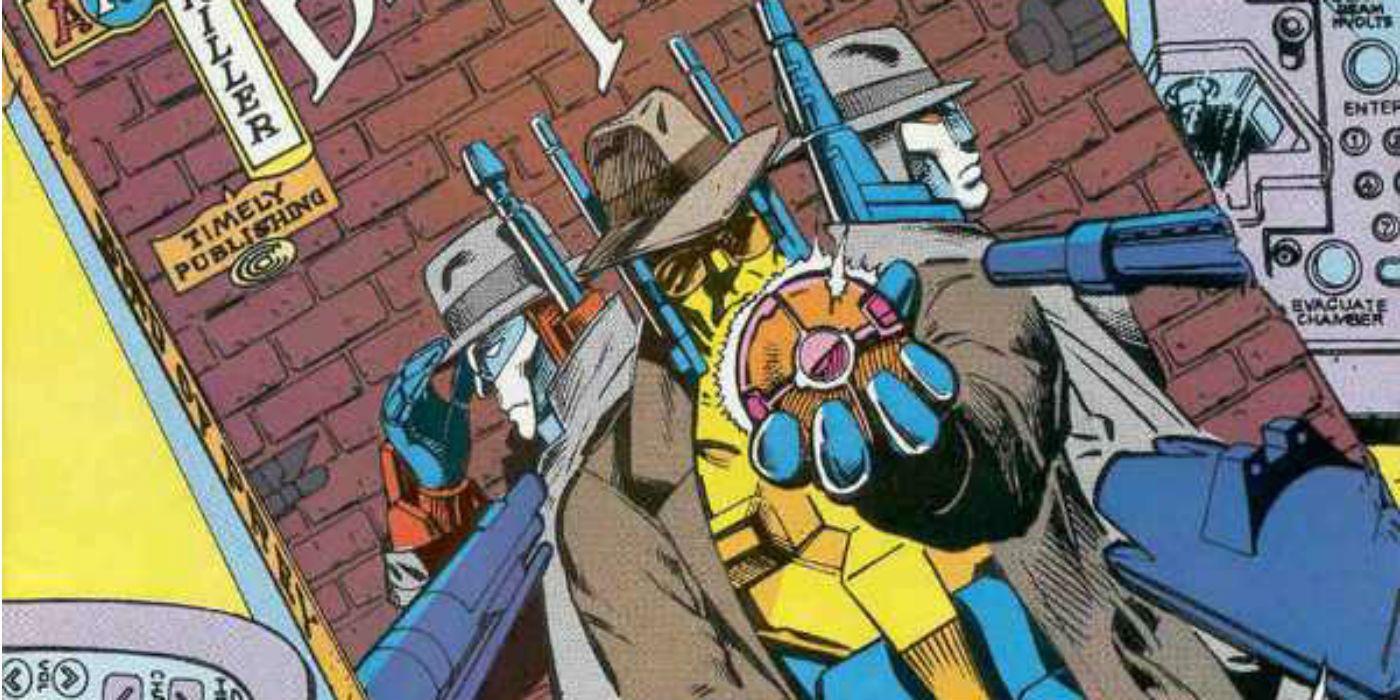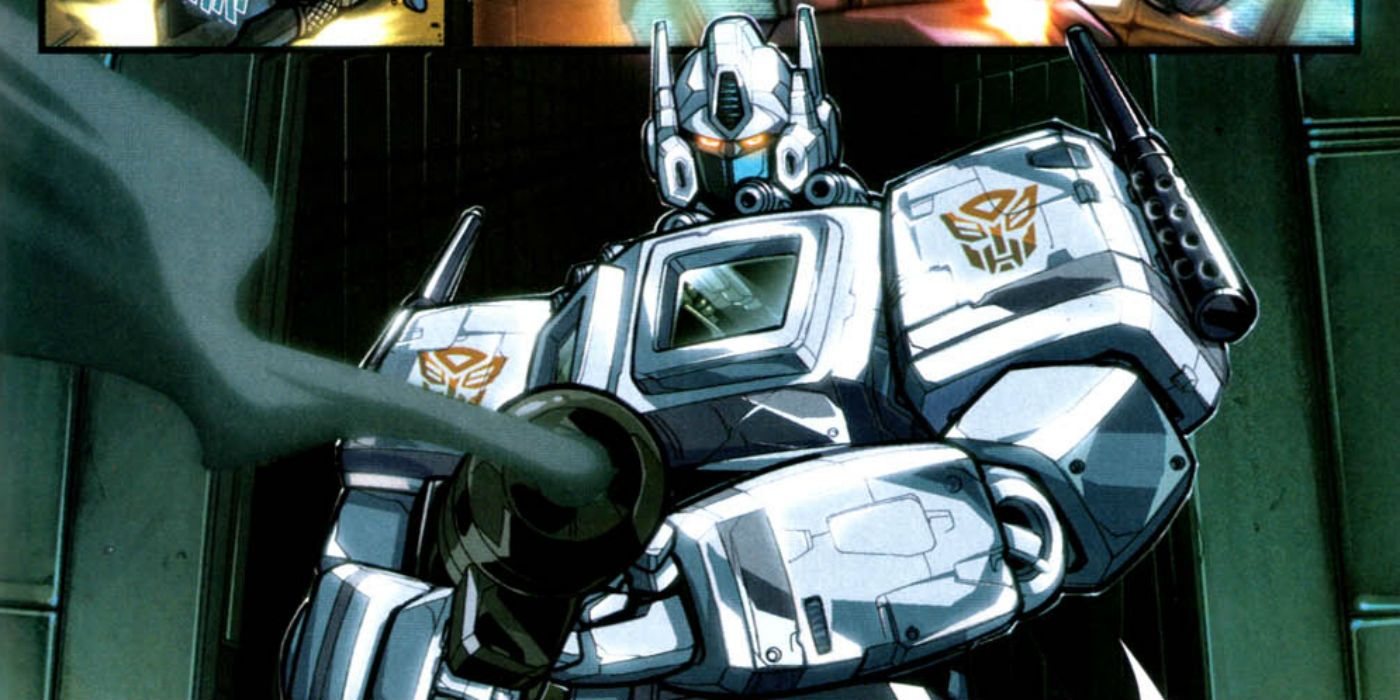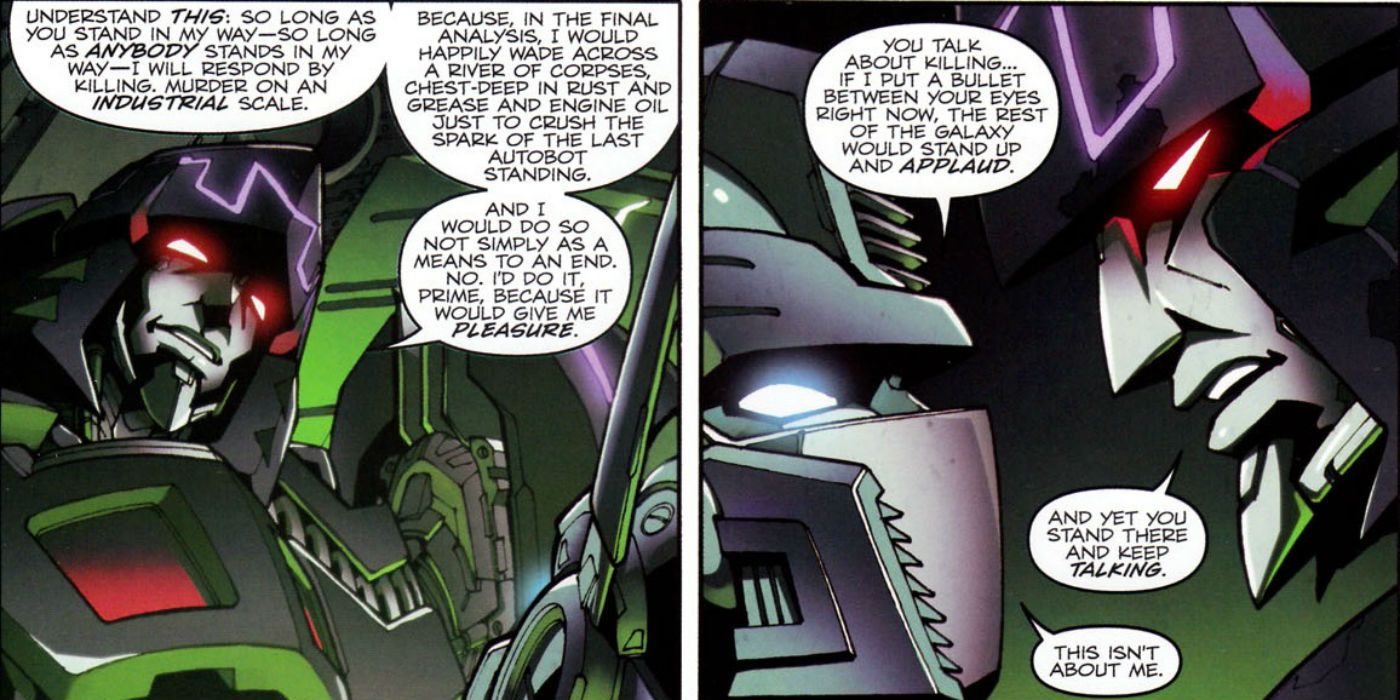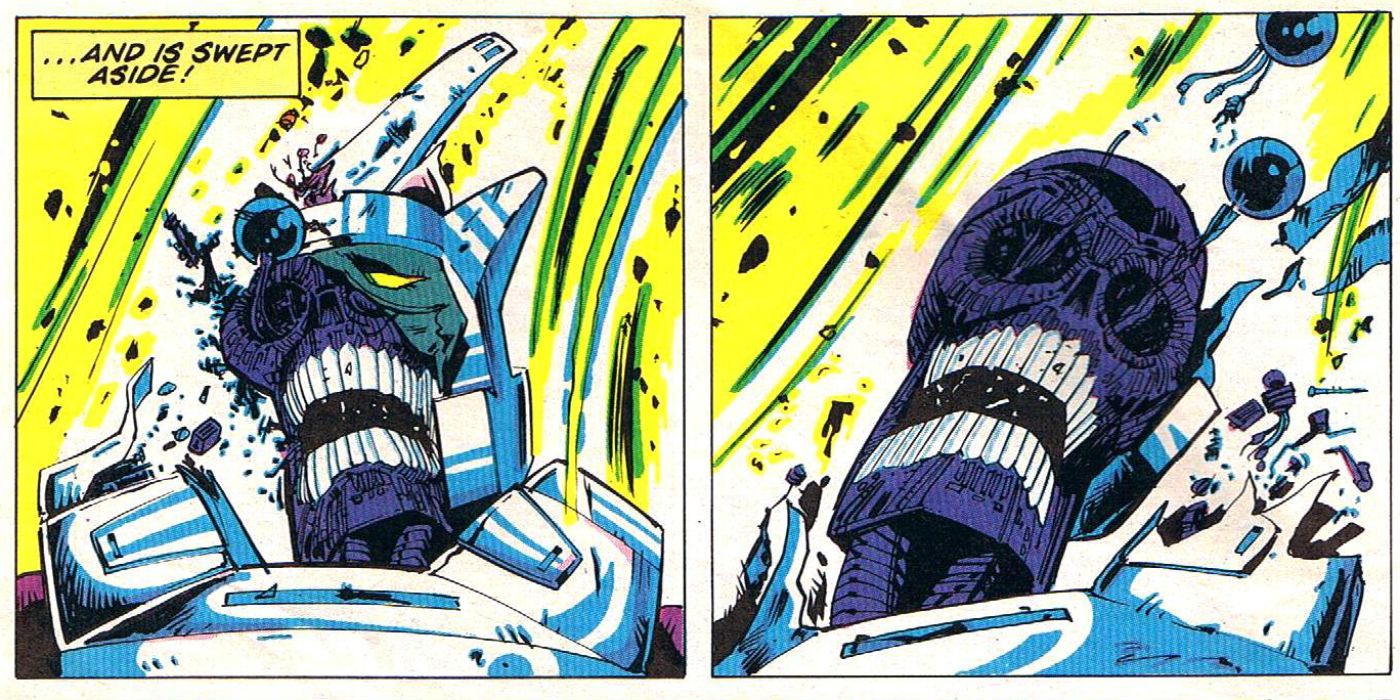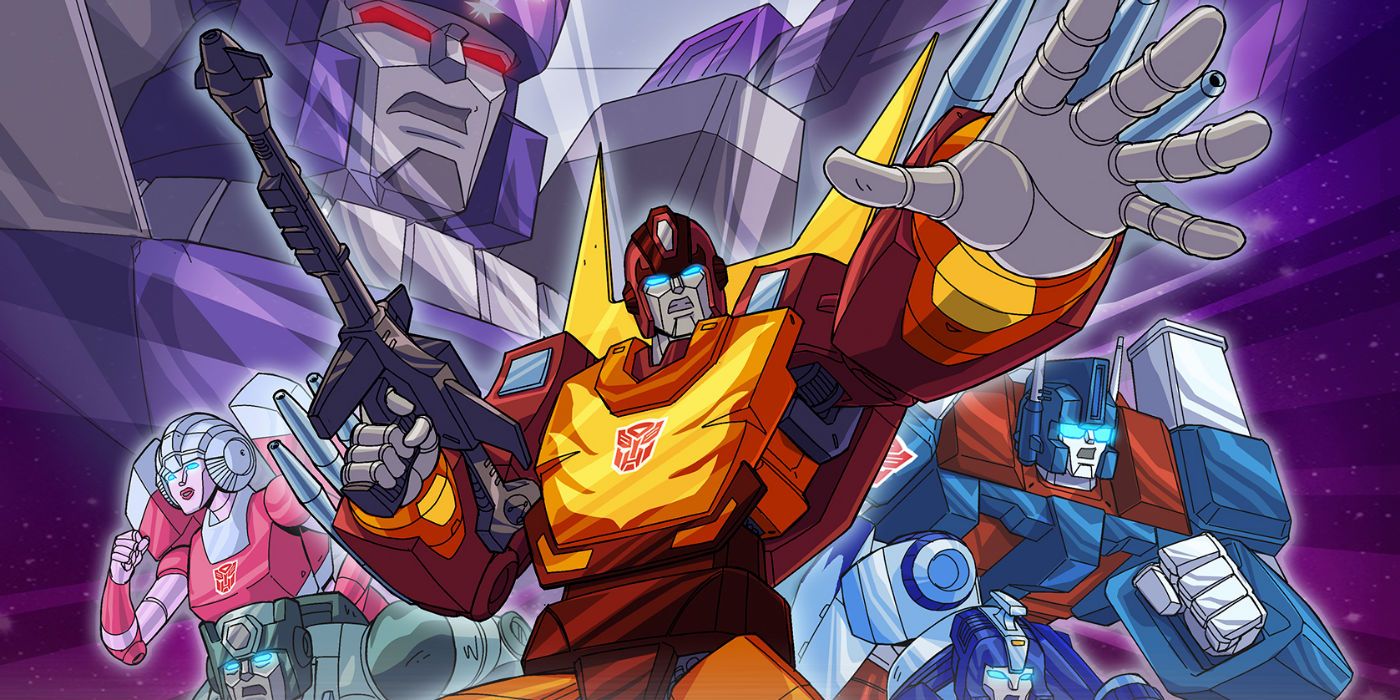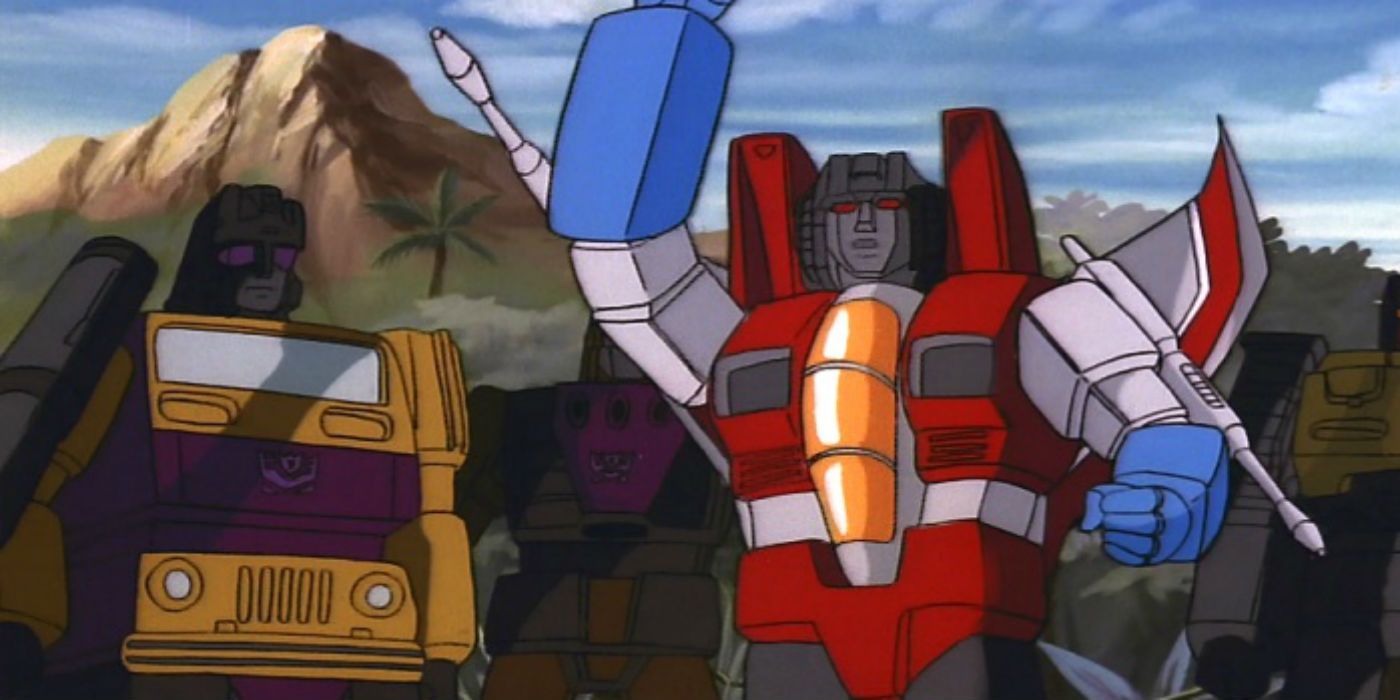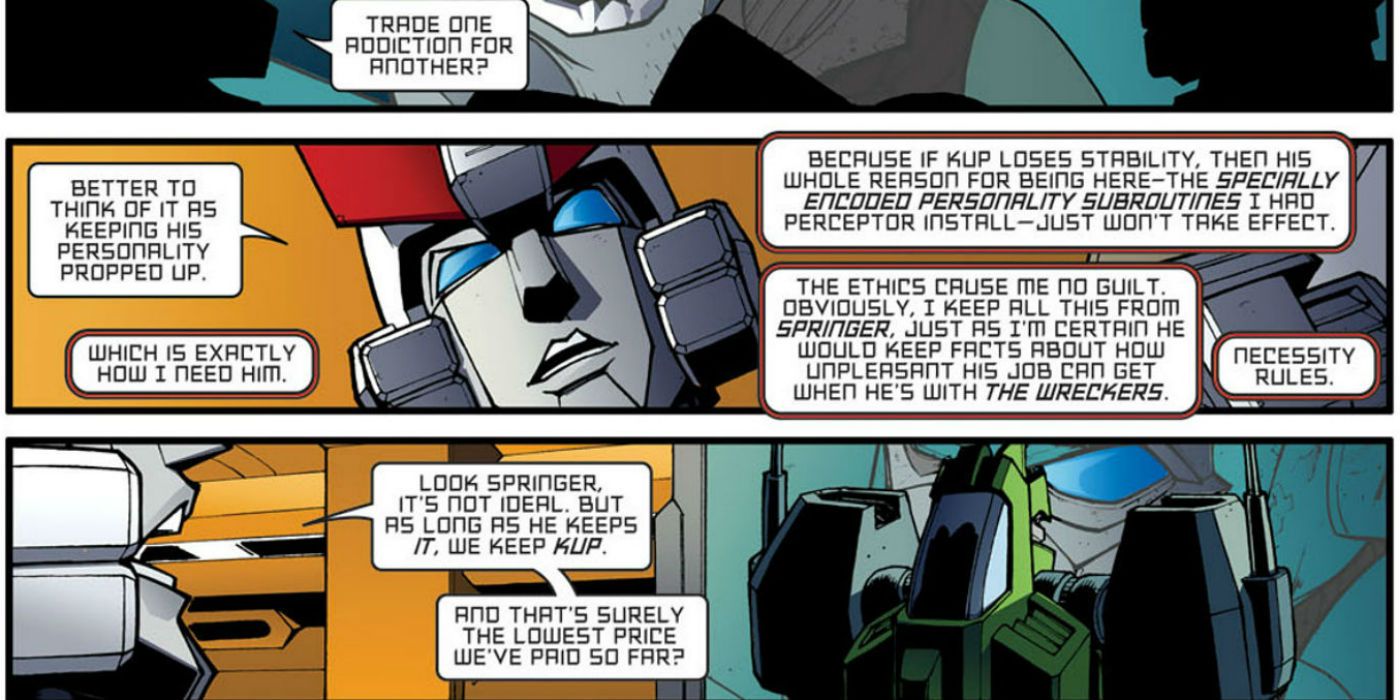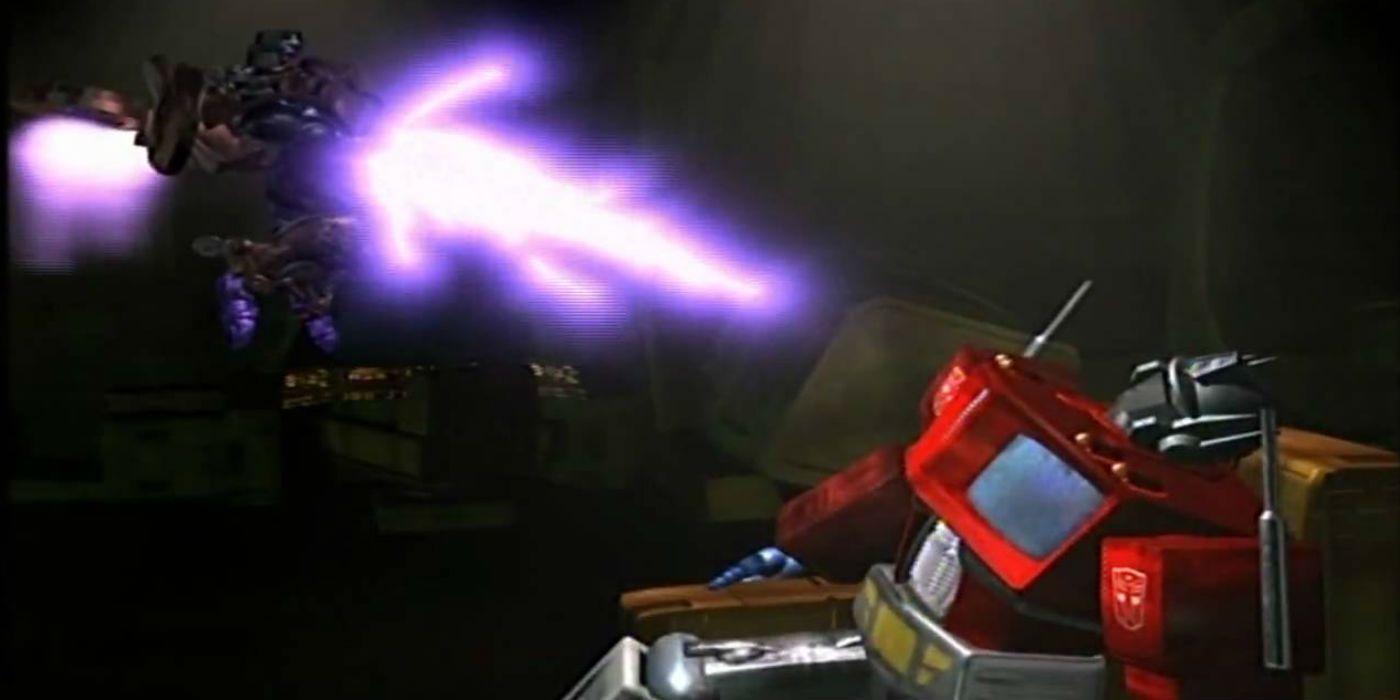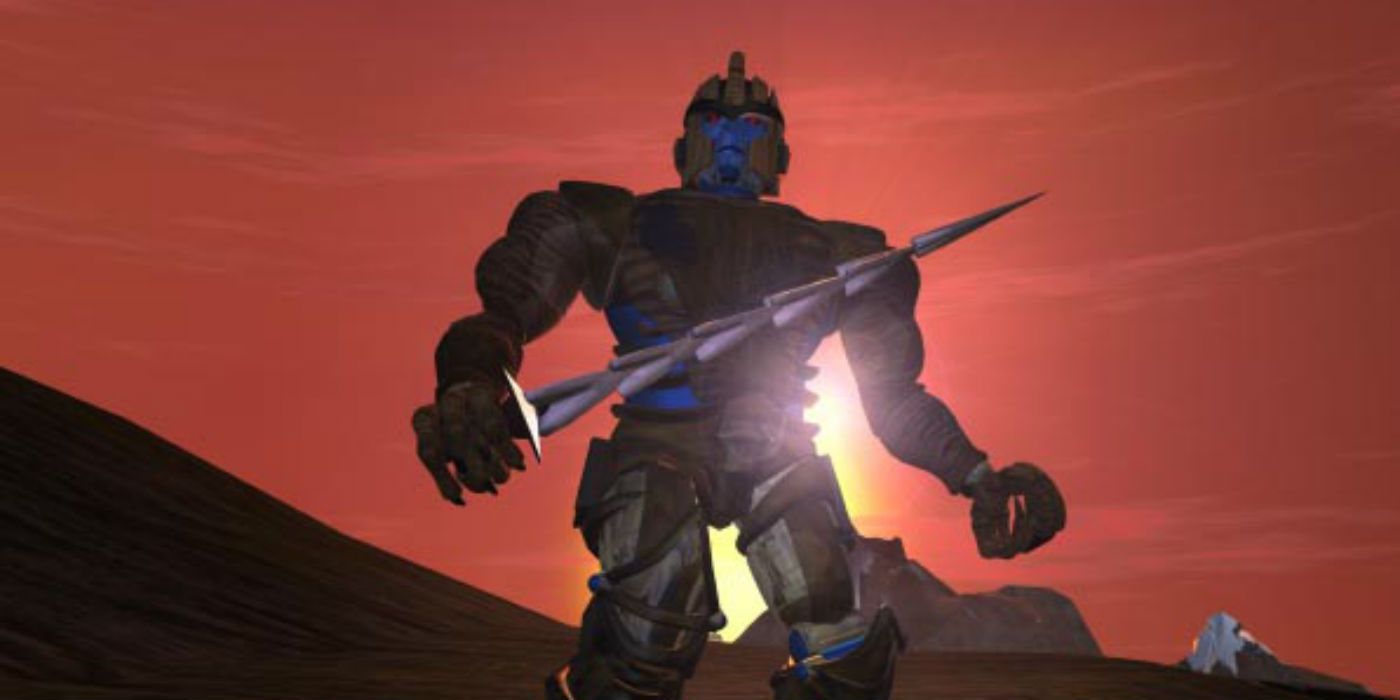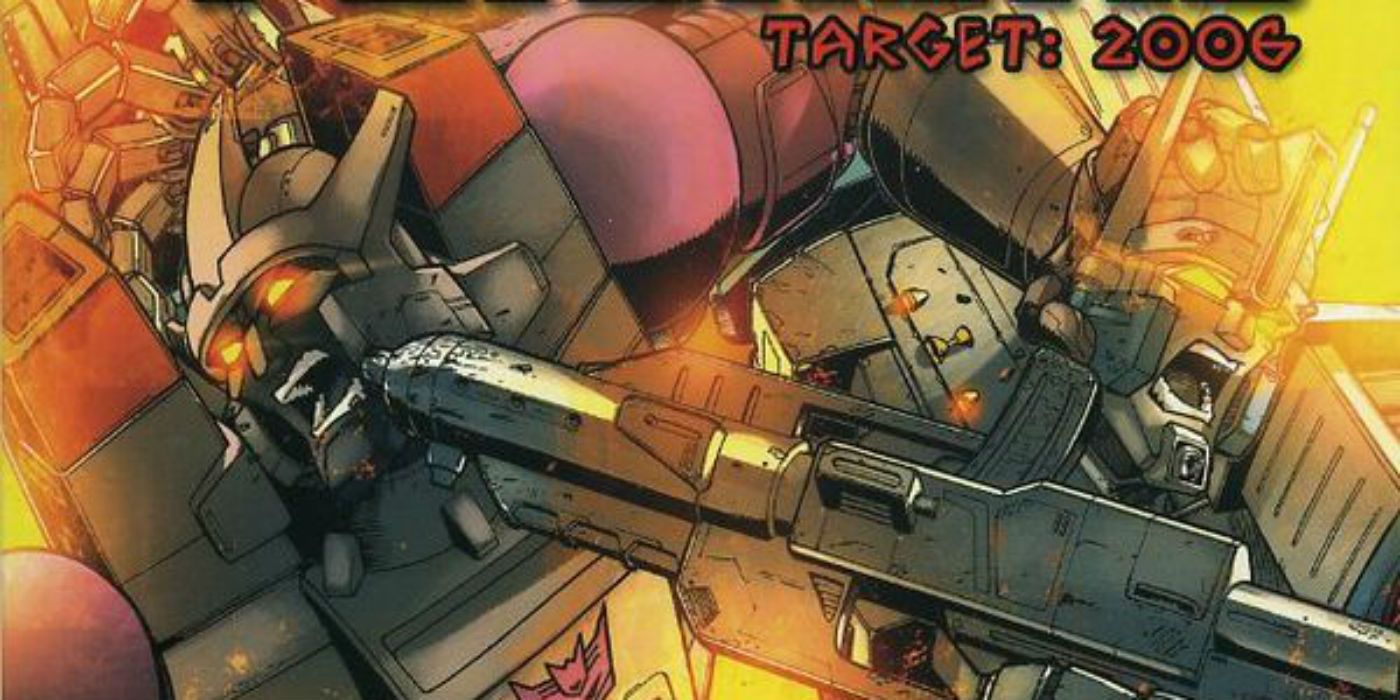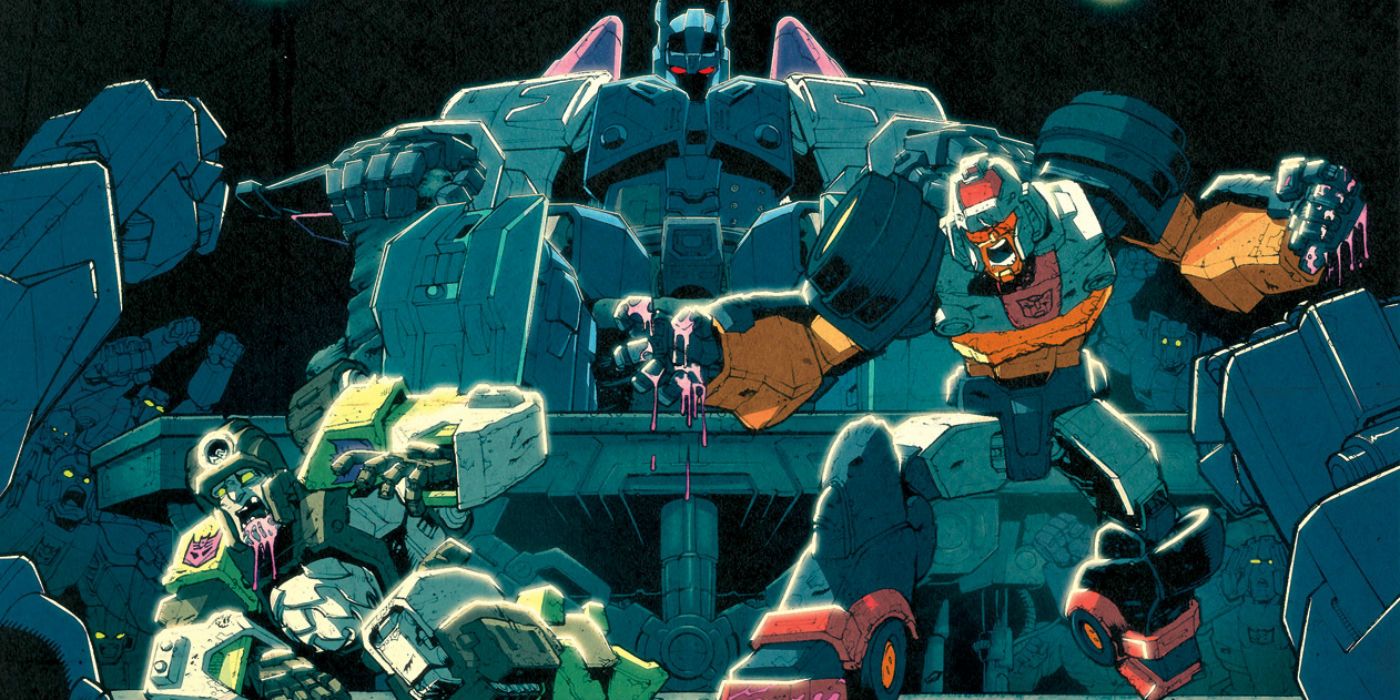There has never been a franchise more designed to sell toys than Transformers. It even began its life simply as a toy line. The comic book that followed was designed to bolster toy sales by creating backstories and spotlighting new characters for that would soon become toys. The cartoon that followed almost never made it into production. That it became a phenomenon leading to a theatrically released animated movie, a dozen shows and video games, five live-action movies, and thousands of comic book issues is a great example of the power of good marketing and the devotion of fandom.
Over the years, as their names promise, The Transformers changed. Sure, Hasbro and Takara (not to mention third party sellers) are as devoted as ever to sell toys, but there are incredible stories to match it. The Transformers boast a deep mystical mythology akin to Star Wars and the weighty concepts of war philosophy and moral ambiguities of Star Trek. Also, giant alien robots kick the crap out of each other.
These are The 15 Best Transformers Stories Of All Time.
15. The Five Faces of Darkness (The Transformers)
This five-parter was the first time we saw the new characters from the movie again. It’s essentially a second movie, and likely one of the best produced. In this story, we’re introduced to new villains, a cool human character (finally) in Marissa Fairborn, and a definitive origin to the Transformers race.
The origin flashback is sweeping and exciting; the writers clearly embraced the sheer alienness of Transformers while adding aspects of Roman history and a slave narrative. They also gave the more metaphysical aspects of the Creation Matrix a more scientific base.
Of course, there are still problems that keep Darkness from earning a higher spot on this list. The series was always known more for its action scenes and voice work rather than writing and animation; the goal was to have a 22-minute toy commercial every week. The fact that there are as many good stories in the series is a testament to the writers. However, there are still plot holes—some the size of a Peterbilt—and the animation is some of the worst in the series, thanks to AKOM.
Otherwise the strength of the writing—specifically the snappy dialogue, and the visual of Ultra Magnus punching a jet—and the sense of scope and history allows the story not only to rise above its flaws, but tell a classic story.
Also, any scene involving Galvatron’s unabashed insanity is a delight. “Strategy is for cowards” indeed.
14. Space Pirates (Marvel UK)
The Great War eventually became three-pronged; Autobots vs. Decepticons vs. the Quintessons-- an alien species with ties to the history of the Transformers race. While not a physical threat themselves, the Quintessons are clever, manipulative, and boast their own army. Each issue finds both Transformer factions repeatedly fooled, trapped, and under attack. The stakes are raised with every cliffhanger—from fan-favorite Blaster being killed off to the Decepticon base getting razed, and the Matrix being stolen from Rodimus Prime. Desperate, the Autobots and Decepticons join forces.
Metroplex saves day, but the moment doesn’t feel as pat as the trope often does. The good guys earned a hard win at the last minute, but that isn’t the key point of the story. Rather, it shows how great of a threat the Quintessons are, and creates an important moment in Transformers lore: Ultra Magnus and Soundwave attempt to talk peace between the Autobots and Decepticons. Both characters are the most rational of their respective camps, and while their exchange is brief (with a great homage to The Killing Joke), it becomes clear that there can never be peace because both species have committed atrocities against the other. Despite whatever presumed binaries of good and evil, neither side can claim the moral high ground anymore; the war will continue because it has to. It’s a bleak ending, especially for a comic marketed toward children.
13. The War Within (Dreamwave)
The War Within marks an interesting point in Transformers history. Through more than twenty years of comics and TV shows, audiences were never given a look at the early days of the Great War. There would be flashbacks or references, but this series was the first to explore and explain the era.
Changes are made to pre-existing story elements to keep from being predictable. The best change was Don Figueroa’s redesign of the pre-Earth Transformer’s bodies and vehicle-modes.
Some story elements don’t quite feel right, however. Optimus Prime’s rewritten origin as the cowardly data analyst Optronix doesn’t jive in the space given for the Hero’s Journey. IDW would give him a more sensible origin as a police captain, but that’s another story. Writer Simon Furman also hits the magic reset button hard, creating a plot hole—taking back a number of revelations thanks to brain surgery. Why not just kill the prone Megatron instead? However, given the otherwise strong quality of the series, it’s excusable.
Furman’s focus is on character and world-building rather than plot in The War Within. He gives us sweeping looks at the crumbling societies on Cybertron—the cultures, the traditions, the history—so that the loss of it in the wars and quakes feels real. The world is meant to full massive and complete, and though not everything was entirely explained, you know that's because there were more stories to tell.
Unfortunately, Dreamwave’s bankruptcy never allowed for that.
12. Transmutate (Beast Wars)
Week to week, Beast Wars was either dead serious or blithely campy. This episode falls in the former category. A child-like but immensely powerful Transformer, the Transmutate was considered a singular threat. When it can’t be convinced to join either side, Megatron wants it destroyed; Optimus Primal wants it put into stasis.
Rampage, the evil cannibal with an unkillable spark, sees the Transmutate as a kindred spirit. So does Silverbolt, a fuzor with the qualities of both a dog and a bird. The two are the strangest characters on the show—and often isolated because of it. The rest of the episode comes down to Rampage and Silverbolt vying for the Transmutate’s soul. If it survives their own lives would be less lonely. In turn, they could give it the affection and sense of belonging they never had.
If this was a lighthearted episode, the Transmutate would survive, Waspinator would be blown apart, and we’d all have a good laugh. But rules are rules and this isn’t a lighthearted episode. The Transmutate sacrifices itself to save its mentors, leaving the episode on the darkest ending of the series.
The episode does what sci-fi does at its best: it takes a far-fetched concept and applies humanity to it through allegory. For kids, it’s a lesson about acceptance. To those who always felt like an outsider, the script is open enough for anyone to apply their own experiences to it.
11. Matrix Quest (Marvel UK)
As a confrontation with Unicron looms, Optimus Prime sends out groups of Autobots to find the Creation Matrix which could kill the giant planet-eater. Matrix Quest exists out of necessity and could’ve easily been phoned in. At worst, it could have been a time-killer. Admittedly, in a lot of ways it is, but Simon Furman’s scripting makes the story a great deal of fun. While many Transformers stories end up in very dark territory, Matrix Quest is lighter. The different places the Autobots travel to allow fFurman pay homage to The Maltese Falcon, Moby Dick, Shane, Alien, and Jaws and adds colors to the Transformers universe.
Each chapter is mostly self-contained and obviously designed with affection for each genre explored—particularly the hardboiled detective fiction with Furman's favorite character, Nightbeat.
In between is the subplot of the warring brother-gods Primus and Unicron and how they created the Transformer race, carefully setting the table for the brutal story to come.
While Matrix Quest doesn’t change the status quo, its tone and mythic revelations would influence Transformers writers for years to come.
10. War & Peace (Dreamwave)
Dreamwave’s stories get a bad rap in the fandom. Yes, Pat Lee’s artwork is a blocky mess, and sometimes the fan-services make the work feel like fan-fiction. War & Peace does suffer from these flaws, but the references are more organic and support the narrative rather than distract from it.
The plot finds the Autobots and Decepticons forced back to a united Cybertron, where factions no longer exist. Much of the story is devoted to the underbelly of this new utopia, and making Ultra Magnus interesting. He goes from a stoic soldier to an assertive but conflicted leader. It’s the story of secret histories and shifting alliances, and how they affect relationships. Of particular note is the relationship between Prime and Magnus, and the multiple references to them being brothers (!).
It’s impossible not to feel like a kid seeing Ultra Magnus’ armor slip off and reveal the white Optimus Prime-underneath just like the toy version. It’s impossible not to love seeing the Gobots melted into scrap or learning that grizzled veterans Kup and Ironhide are old friends. Even the wink and nod to the conflicted loyalties of Mirage and Thundercracker or the Dion/Magnus theory are worth a smile.
War & Peace is clearly made with love, and would likely have landed higher on the countdown had it not been so compressed. You can see the vision that writer James McDonough had, and it’s a shame he didn’t get the space he needed or the time to answer the mysteries he created.
9. Chaos Theory (Transformers 22-23, IDW)
Chaos Theory is a prelude story that is better than the event that follows. Almost entirely plotless, this character-driven two-parter layers the Prime/Megatron relationship in a way no story had before.
In the present, Optimus Prime and a captured Megatron have a long overdue discussion about their lives spent at war. In the past, we learn of their humble beginnings—Optimus as Orion Pax, police captain, and Megatron as a blue-collar worker turned activist. They form the beginnings of a friendship and fight the corrupt council together.
In the present, they vent their millions of years of frustration at one another. They rant and rave; they even share a laugh. They are written to be fully self-aware of the ridiculous nature of the war they fight and their own roles within it. Their enmity is defined now as something personal in a way beyond just the fighting. It was about the death of what could’ve been a friendship. It was bitterness at the old guard for creating a system so corrupt that they both had to choose these different paths to oppose it, which led them to eventually oppose the other. Megatron: the “benevolent dictator”; Prime: the "freedom at all costs" soldier.
Most telling, however, is the fact neither one will apologize for any wrong-doing over the course of the Great War.
8. Time Wars (Marvel UK)
Invariably, Transformers finds a way to muck with time. In Time Wars, future Autobots and Decepticons travel to the past to stop a time rift from destroying Cybertron. During this, Optimus Prime considers the morality of killing the captured Skorponok. Is cold blooded murder permissible in this situation? Is it worth losing everything Optimus Prime stood for?
The future and past Autobots meet for the first time and, thinking the other to be enemies, fight. While it’s commonplace for superheroes (or even Decepticons) to fight each other, it’s rare for Autobots to do so. This rarity makes the battle feel special and the circumstances dire. We already know time is falling apart and now so are our heroes. Tensions are raised even further when it’s revealed that Megatron and his future self Galvatron have teamed up and are causing the time rift. Together, they’re such a severe threat that both factions must unite against them.
The story climaxes with a brutal fight between Optimus Prime and Galvatron, and a set of heroic sacrifices by the Decepticons show a more balanced look at the opposing side, rather than as the simple binary of good vs. evil. Serving as the final chapter in a spiritual trilogy preceded by Target: 2006 and Space Pirates, Time Wars mixes high tension with relevant questions of war conduct.
7. The Transformers (1986 animated movie)
No single Transformers story has been as influential as this one. This 80-minute theatrical release introduces a tidal wave of new characters that would not only take over the third season of the animated series, but would carry the comics for years to come.
The way old characters were phased out was shocking. For two seasons of the show, even the youngest child in the audience knew that the laser blasters were ineffective. Here, dozens are shot to death or just laid out as corpses on the ground. Prowl was burned from the inside.
Most traumatic, however, was the well-fought but ultimately meaningless death of Optimus Prime. The negative backlash made Hasbro change the script for their GI Joe movie, making it so Duke was put into a coma rather than killed.
While the story is notoriously crappy, the animation in this movie was crisp and clean. The sense of scope in The Transformers lays the keel for the Simon Furman-developed mythology to come. Concepts like the Creation Matrix, Unicron, and the Quintessons all debut here. Without this movie, the backbone of the Transformers lore would be non-existent and almost none of the stories on this list would have been written.
6. Starscream’s Brigade (The Transformers)
Starscream is the greatest Decepticon of them all. He’s manipulative, resourceful, untrustworthy, brilliant, and merciless. In “Starscream’s Brigade”, we finally get to see him use these terrible traits.
He threatens his way onto Cybertron and steals Personality Components from a large set of filing cabinets. These Personality Components are the brains of political prisoners Megatron had arrested and put into stasis. There are thousands. Starscream then grabs a handful and builds his own army. Before he leaves, he blasts the room, killing off the rest of the prisoners. That's right, Starscream committed a mass murder in a children’s cartoon.
Starscream creates the Combaticons, but leaves out their energy absorbers. These are political prisoners after all, and he needs to make sure they can be controlled. Without these absorbers—which now only Starscream has—they’d starve to death without his help.
He attacks the Decepticons and forces Megatron to yield command and then beg for his life in front of everyone. Chris Latta’s voicework is perfect, giving Starscream a cloying, joyous tone that made his depiction so iconic.
The only reason this episode isn’t higher on the list is that its second part falls so flat. This episode should have been spread out to explore Starscream’s leadership of the Decepticons, rather than creating the jumbled mess that followed.
5. Everything in its Right Place (All Hail Megatron 15, IDW)
This entry’s a strange one. It’s technically a sequel to the Spotlight: Kup one-shot from years prior, and it’s also technically part of All Hail Megatron but it isn’t actually connected to the events of that story. The focus is placed on Prowl, a character who never really was defined beyond the term “strategist.”
Prowl is driven by pure logic that is not tempered by morality; Machiavellian to the nth degree. His plans could end the Great War if the Autobots listen, but they’re harsh and lack the romantic heroism that Autobots generally go for. Through the narration, Prowl is shown to be mathematical down to the marrow. He predicts behavior to the percentage and manipulates others accordingly.
He rebuilds Kup’s broken mind. Kup is a maverick hero; he has the it-factor—that personality—that Prowl doesn’t. Kup is the type of guy people would listen to. He fixes Kup, but adds a subroutine that will allow Prowl to plant his ideas in Kup’s head. They’ll be listened to then. And things will get done. “So now when he speaks,” Prowl notes. “You won’t even see my lips move.”
The narrative chooses not to judge Prowl’s actions, merely relaying them, and allowing us to decide for ourselves if he’s a hero or a villain.
4. The Agenda (Beast Wars)
It’s always more fun when the bad guys win. This three-parter is the climax of the series and of Transformers lore in general. The original series' background finally comes to the foreground with the return of Ravage and the reveal of the Ark stuck in Mount St. Helen.
These episodes move very quickly, and each scene serves to change the plot, permanently shake-up the status quo, or reveal important exposition for what’s the follow. Still, there’s never a sense that it’s being rushed. For all the callbacks to other episodes and tying in references to known lore, the episode never feels bogged down or stagnant either. Beast Wars added just the right amount of the mythology to remix for the old fans without confusing new ones.
The action is dynamic and inventive (you can’t go wrong referencing Dr. Strangelove either) and the humor cracks a window in the tension without undermining it. Almost everyone gets a chance to shine, but this is really Megatron’s show.
He’s the central character, and goes from assured failure to complete victory. His megalomaniacal yet strangely sensible speech before he assassinates Optimus Prime highlights his evil nature, but also the reasons behind it. In his growling, fourth-wall-breaking final lines, Megatron changes history and confirms that he’s the best incarnation of Megatron, and superior to his namesake.
3. Code of Hero (Beast Wars)
Beast Wars loved killing off characters, but Dinobot’s death was a classic one; not only for the series but for the franchise overall.
By the mid-point of season 2, Dinobot was at an impasse. He had switched sides too many times in search for answers about himself and the world he was stranded on; nobody trusted him. Surrounded by advanced transmetals, he was feeling obsolete—a real "no country for old men" type of deal. Dinobot’s sacrifice was about acceptance: of the decisions he’s made, of the changing face of the war around him, and that there can only be one ending for the life he had chosen.
Dinobot ran a gauntlet of enemies much stronger than him, proving he was still a capable warrior, but also that he was hopelessly outmatched. Regardless, Dinobot fought off most of the Predacons by himself, saving the budding human race and destroying the Golden Disk, thereby making it so Megatron could no longer change the past.
Finally, in his last grand soliloquy, Dinobot came to accept one last thing: his past. He asked the Maximals to tell his story truthfully—the good and the bad things he’s done. In that moment of acceptance, he regained the honor he had lost in his previous betrayal; in his sacrifice, he became one of the greatest heroes in Transformers history.
2. Target: 2006 (Marvel UK)
Target: 2006 was supposed to be a cheap tie-in for the then-upcoming 1986 animated movie. Instead, writer Simon Furman used this as an opportunity to build a Transformers mythology. Concepts like the Matrix and Unicron, and a slew of new characters introduced in the movie are previewed and given depth here.
Tension is derived from the mysteries as well as the ticking-clock of Ultra Magnus stopping Galvatron before the Matrix Flame dies. With Optimus Prime missing and Galvatron and his future Decepticons running roughshod in the past, Simon Furman takes further risks with the narrative.
Megatron leads the Autobots to stop these new Decepticons, but nothing takes. Slowly, a showdown between Ultra Magnus and Galvatron builds. In short, the brave and rational Ultra Magnus represents order, while the psychotic and genocidal Galvatron represents chaos. Their enmity begins here and has been translated into almost every Transformers continuity thereafter. The battle they have in Target: 2006 takes place over several chapters and takes advantage of the fewer violence restrictions since the characters aren’t human.
In the end, the story created fans of both characters—Galvatron for the insanity, Magnus for his resilience and refusal to stop. Furman virtually guaranteed continued readership, even after the movie came out and the previously established characters were killed, by producing an amazing preview of the characters to come. Target: 2006 was meant to be filler, but instead became the most influential Transformers story of all time.
1. Last Stand of the Wreckers (IDW)
Widely considered to be the Watchmen of Transformers comics, Last Stand of the Wreckers takes the moral high ground the Autobots have and burns it to the ground. A group of D-list characters infiltrate Garrus-9, a former Decepticon prison turned stronghold, to obtain something called Aequitas. Unfortunately, it’s now run by half-crazed former prisoners led by Overlord— a maniac so vile even Megatron wants nothing to do with him— who runs Garrus-9 like Caligula ran Rome.
The characters presented are largely glory-seekers and wannabes. They’ve heard the stories of the Wreckers— the stalwart heroes that always snatch victory from the jaws of defeat— and they want their own names marked down beside the greatest of them all.
In the end, it’s revealed that the stories were just stories; edited to look heroic. The truth is that war has made animals of them all. The glory is there for the civilians, for those who weren’t there, to make it seem like it was worth it; Aequitas is revealed to be one last cover-up of the truth.
In seeing many of the popular Wreckers come back, just to learn their secret history, the audience takes on the role of the D-listers. We all see our heroes as they really are: just people. The power of Last Stand of the Wreckers isn’t its incredible violence or strong character work, it’s the question it raises. After seeing the things the Autobots have done, can you still call them the good guys?
---
What is your favorite Transformers story? Let us know in the comments!

